The act of joining two individual lengths of optical fiber to create a secure connection is called splicing. There are currently two common splicing methods that can be utilized - fusion splicing and mechanical splicing. While both processes share similar initial steps, the differ substantially thereafter in terms of the approach and necessary materials, while producing different results.
With this being the case, how might one choose which path to take? Is one method considered better than the other? In this brief article, we take a closer look at both the fusion and mechanical splicing methods to provide some clarity on the subject. At the conclusion, you should have better idea about how each method works, the benefits and drawbacks of each, and which uses cases or applications are more suited to one or the other.
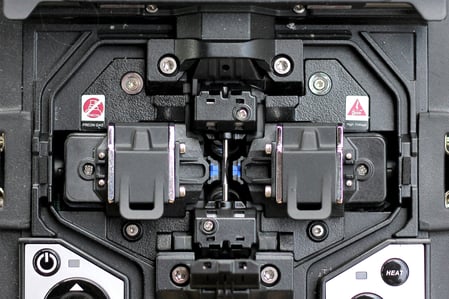
Figure 1: Fusion Splicer machine close-up
Defining Mechanical & Fusion Splicing
The ultimate goal of cable splicing is to create a secure connection between two or more sections of fiber in a way that allows the optical signal to pass through with minimal loss. As we mentioned already, both mechanical and fusion splicing achieve this goal, but they do so in very different ways.
Fusion Splicing
Fusion splicing involves heating the ends of each fiber that are being joined and fusing them together permanently. Because this process requires near-perfect alignment of the fibers and their respective cores, along with fusing the glass together in a precise manner, this is accomplished using a fusion splicer device. The device effectively aligns the two fiber ends, melts the glass via an electric arc, then fuses them together. Because of the resulting splice point in the length of fiber, either a heat-shrinkable protective splice sleeve or a coating material is typically placed over the splice point to give the splice more strength and durability.
Mechanical Splicing
The primary way that mechanical splicing differs from fusion splicing is that it is a manual process that does not permanently fuse or join the fibers together, instead it locks and aligns the fiber ends together with a screw mechanism in a splice case. This method requires no heat or electricity and is performed manually by a technician using the required tools and components.
Fusion Splicing Steps - A Quick Overview
For both fusion and mechanical splicing techniques, there are four distinct steps to the process. The first two steps for each are virtually identical which are covered in this section, but the final two are where the differences come into play.
Fusion Splicing and Mechanical Splicing Step 1 - Fiber / Cable Preparation
To prepare the end of a fiber cable for splicing, a few inches of the protective jacketing, buffer tubing, and coating must be stripped away in order to access the bare glass fiber. After using a handheld stripping tool to remove these layers, the bare fiber is now accessible, which should then be cleaned quickly with an alcoholic wipe to remove any dirt or dust.
Fusion Splicing and Mechanical Splicing Step 2 - Cleaving
Once the bare fiber is prepared, the next step involves cleaving the end fiber, which shouldn’t be confused with cutting. Cleaving is when the fiber is lightly scored with a sharp blade and then flexed until it naturally breaks. To create an ideal connection point for a fusion or a mechanical splice, a clean and smooth cleave that is perpendicular to the fiber is absolutely necessary. The example image below shows examples of poor cleaves on the left and good cleaves on the right: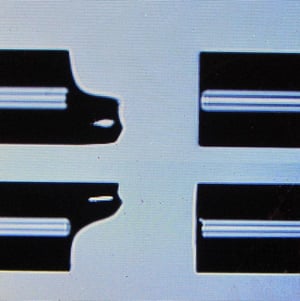
It should also be noted that when using today's quality fusion splicing machines, many will not even attempt to complete the splice or allow it to continue from this point if one or both cleaves appears to be a poor cleave. If a poor cleave is used in the splicing process, it does not allow for a smooth or seamless connection or alignment of the cores, resulting in significantly higher than acceptable signal loss / attenuation.
Fusion Splicing Step 3 - Core Alignment & Fusing
The next step in the process is where the two approaches differ, which is the fiber and core alignment and physical connection of the fibers. Because of a fiber's tiny total diameter, it is nearly impossible for a human to properly align them manually for a fusion splice. Since fusion splicing machines automatically align and adjust the two fiber ends into the appropriate position, most fusion-splicing machines include a small screen with a magnified window or viewer that allows the enables the user to visually see the fiber ends, like in Figure 3 in the previous section. Near-exact core alignment is the goal of fusion splicing to ensure a seamless fusion, which allows the light signal can pass through with minimal loss or reflection of the signal. Once the correct alignment is achieved, the two ends of the fiber are heated and fused together using a high-voltage electric arc.
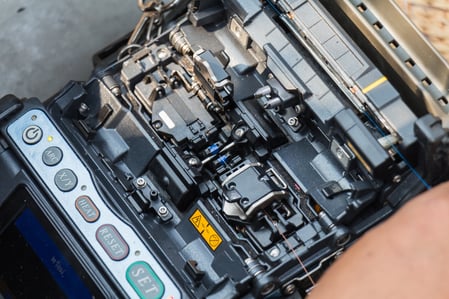
Figure 3: Fusion Splicer showing the first fiber being placed in the machine prior to automatic alignment
Fusion Splicing Step 4 - Fiber Splice Protection
One the fusion splice is completed successfully and the machine verifies the quality, the splice and surrounding area should then be protected to give it more strength and durability. Although a fusion splice has physically joined the two fibers together into a single continuous fiber at that point, the splice area is still more susceptible to damage from bends and pulls, since the bare fiber coating was removed when stripping the fiber initially.
Protection is typically achieved by placing a splice closure or sleeve over the splice area, which is then heat shrunk into place. Most fusion splicing machines provide an area on the machine where this heat-shrinking process can be performed in just a short period of time after the fusion is made.
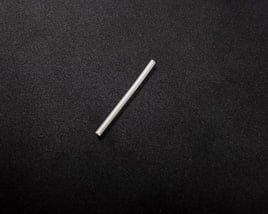
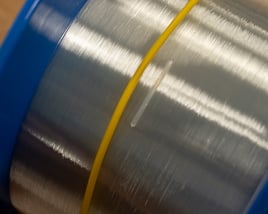
Figures 4 & 5: Splice sleeve component (left) and example use of covering a splice on a fiber spool (right)
The Mechanical Splicing Steps
Since it was noted that Steps 1 and 2 are the same for both splicing methods, we will skip to Step 3 of the mechanical splicing process where the necessary process, components, and tools differ from fusion splicing.
Mechanical Splicing Step 3 - Alignment and Connecting the Fibers
Unlike with fusion splicing where the fiber ends are melted and fused together to create a single seamless and continuous fiber, mechanical splicing does not actually fuse or seamlessly connect the fiber ends together. Essentially, the two fiber ends are manually and physically brought together as closely as possible without being joined, while an index matching gel is used in between to help maintain continuity of the index of refraction of the glass cores at that point to minimize signal loss.
A close concept comparison of mechanical splicing is mating two fiber optic connectors together using an adapter. The two connector ends with their respective fibers are brought together closely within the adapter, but they are not fused together. All that is used for this step is the two fiber ends, the mechanical splice component, and the index matching gel for improving the performance quality of the splice. Some of the newer mechanical splices
Mechanical Splicing Step 4 - Fiber Protection
Because a mechanical splice component is used, a separate step or item isn't strictly necessary for protecting the finished splice. The mechanical splice mechanism serves as a protector in itself. Mechanical splices are available in a variety of formats, some with slight variations on this general type of approach.
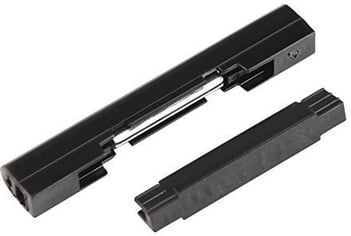
Figure 6: Example of a mechanical splice case
Choosing Between a Fusion Splice and a Mechanical Splice
The primary factors that will determine which of the two methods a person will select for their application include the desired splice performance, cost, time and environment, or usually a combination of these. Depending on which of these factors is most important when a splice is required will often drive the approach an individual will take.
Splice Performance
Based on what has been shared in this article so far, which splicing method do you think produces a higher quality splice with minimal loss? If you chose a fusion splice, you are correct! Due to the superior ability of today's fusion splicer devices to accurately align fiber cores and the process of physically fusing and creating a seamless, joined fiber, the resulting loss value of a quality fusion splice is typically less than 0.05dB. In fact, in some instances, a great fusion splice may not even be easily detected by an OTDR when checking fiber integrity, which is ideal.
On the other hand, since a mechanical splice aligns the fibers closely together but doesn't physically fuse or join them, the resulting loss tends to be higher will resulting loss values in the range 0.2bB-0.75bB. While it may not seem like much, in a network or fiber span where there may be a number of splices and/or the loss budget is critical, this difference can add up. As an example, a fiber with 4 fusion splices at 0.05dB each results in a total loss of 0.2dB, whereas a fiber with 4 mechanical splices at even just 0.25dB results in a total loss of 1dB. Thus, using the fusion splice in this example scenario reduces splice loss by 75%!
Cost
Both fusion and mechanical splicing methods carry similar costs for the stripper and cleaver tools, but after that each have two entirely different cost profiles. Because mechanical splicing requires the use of a component and not an electrically-powered, automated device, mechanical splices are very inexpensive, only costing a few dollar a piece. A quality fusion splicing device, on the other hand, costs thousands of dollars, sometimes in the $10K-$15K range for the best ones used in lab and manufacturing settings.
Because of this, mechanical splices carry a lower cost in the short term. However, it should be noted that if performing thousands of splices over a longer period of time, a fusion splicer will provide a reduced cost on a per-splice basis because a separate physical splice component is not required for every splice (ex: $3 mechanical splice vs a few cents for a fusion splice sleeve).
Time and Environment
While fusion splicing devices are proven to provide a better performing splice, sometimes it is just quicker for a field technician to utilize a mechanical splice, especially if it's in a challenging area or environment where it might be difficult to carry or utilize a fusion splicing device. That being said, with the use of bucket trucks, splicing tents, etc. that can help provide protection from the elements and an improved workspace, fusion splices are still the preferred approach for quality splices whenever possible. In addition, fusion splicer devices have been designed for the field technician applications, smaller in size and easier to carry.
Takeaway Thoughts
To summarize, fusion splicing is the preferred splicing method in today's fiber optic networks, due to the significantly improved splice performance over mechanical splicing. Quality fusion splicing machines can carry a significant upfront cost of acquisition, but with a variety of types available globally and varying formats, they provide a lower per-splice cost over the long term. Fusion splicers must also be maintained and calibrated periodically to ensure optimal performance, which can carry some additional costs.
While fusion splicing is the preferred method, many telecom and communications network operators perform both types of splicing methods depending on the situation. While using a fusion splicer to repair a damaged cable with a high fiber count happens regularly, mechanical splices can be used quickly and efficiently in hard to access areas or environmental conditions that may not be suitable or simply when a quick fix is necessary to restore service.
Questions?
If you have further questions about fusion or mechanical splicing, contact M2 Optics at your convenience. Our team of fiber experts are available to support you or point you in the right direction depending on your requirements.





